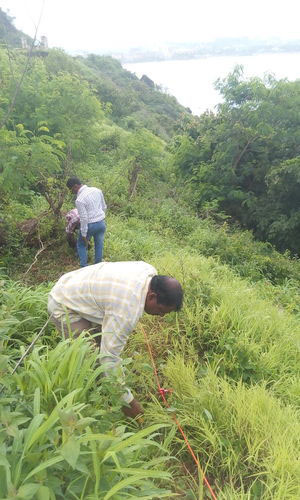
Welcome to Drisana Geotechnical Consultancy!

INTRODUCTION
Resistivity soundings and mappings are geophysical methods used to provide an image of the underground resistivity by non-destructive. Electrical profiling, known as constant separation traversing (CST), uses collinear arrays to determine lateral resistivity variations in the shallow subsurface at a more or less fixed depth of investigation. The current and potential electrodes shall be moved along a profile with constant spacing between electrodes. The two most common array types used for CST are the dipole dipole and pole-dipole arrays, where a dipole is a pair of current or potential electrodes.
METHOD & SITE OPERATION
Many electrode configurations shall be used in geophysics to measure subsurface resistivity. A common factor in these configurations is a set of current input electrodes usually labeled C1 and C2 and a set of voltage measurement electrodes usually labeled P1 and P2. The dipole-dipole method places the C1 and C2 electrodes to one side with a spacing between them denoted as "a". The P1 and P2 electrode pair with equal a-spacing shall be placed collinearly a distance "na" away from C1 and C2. A distance equal to an integer multiple of “a” is denoted "na".
As measurements shall be taken at various n's, that is, the pairs of electrodes are moved apart, a sounding is obtained. If the electrodes are moved across the surface, a profile of comparative values shall be generated. Thus the dipole-dipole method produces a combination sounding-profiling set of data if measurements are taken at various values of n along a profile. Figure 3 depicts dipole-dipole configuration including electric field lines and resultant equipotential surfaces.
Since purpose and objective of the survey are to assess the thickness of the geologic layers and its strength, the ground characteristics of the proposed area for geotechnical purpose then the depth of investigation will be made confined up to 50 meters.
Data Acquisition and Presentation:
The data will be processed using standard processing software and resistivity imaging will be carried out and pseudosection showing vertical and horizontal variation of resistivity shall be prepared. Based on geology of the area and identification of the different sub- surface lithological units identified by electrical surveys 2D pseudo section will be prepared.